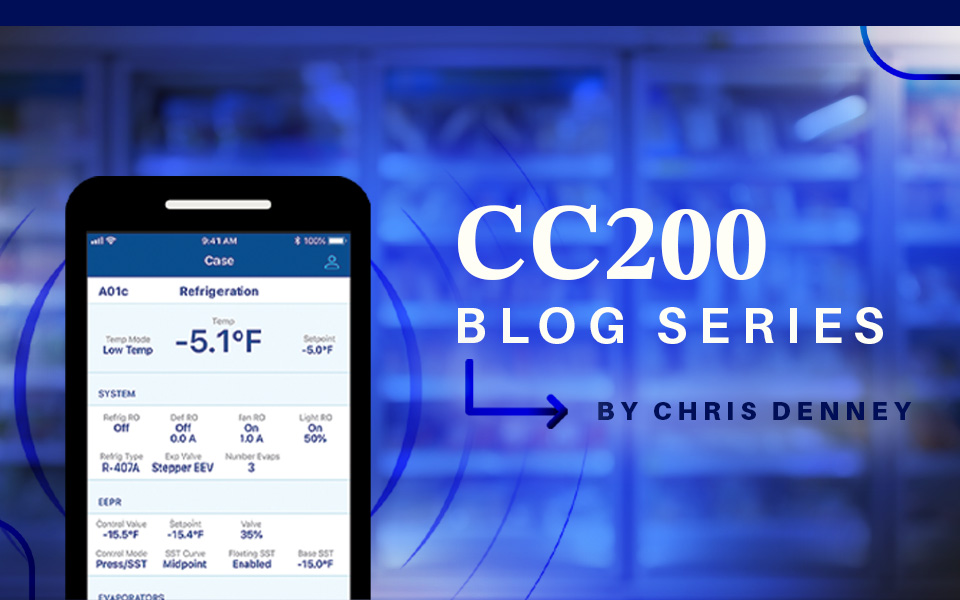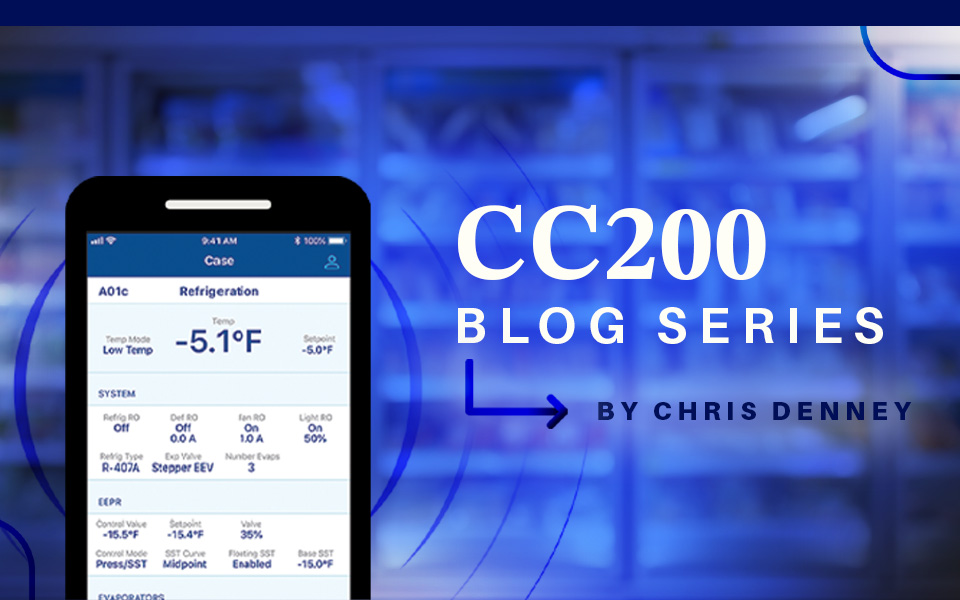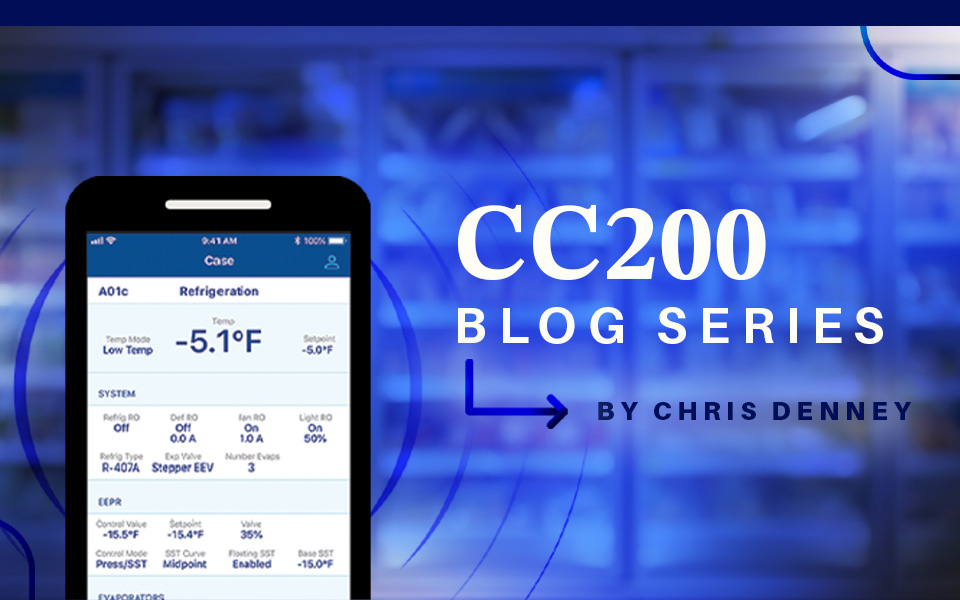Predictive maintenance is showing big promise in the HVACR market. I recently provided input for an article for ACHR The News that discusses how predictive maintenance technology is being used in the commercial and residential markets. You can read the full article, “Predictive Maintenance Brings New Potential to HVACR Service Market,” here.

HVACR systems are becoming smarter and more connected using internet protocol (IP) networks and the industrial internet of things (IIoT). These allow the real-time monitoring of equipment, or predictive maintenance, which gathers data points from equipment to keep tabs on system performance in order to help reduce the likelihood of failure.
For HVACR contractors, this means identifying a problem before it causes a larger issue, so that maintenance can be done to prevent equipment negatively impacting food quality and safety or other operational imperatives. For instance, a refrigeration rack alarm may indicate an issue that can be addressed, preventing operational issues that could have a negative impact on multiple cases of perishable product or thousands of dollars in-store merchandise.
How it works
Drawing from a combination of equipment sensors and control system data, performance analytics can provide store operators and enterprise managers deeper insights for:
-
- Real-time and historic operating conditions in their facilities and systems
- Pressure, temperature and energy data to compare to established benchmarks for a single store, stores within a region or enterprise-wide
- Enterprise-level and store-level dashboards and prioritized notifications
For an example of how this differs from a rack alarm scenario, let’s look at a display case analysis based on temperature sensor data. Performance analytics may detect an anomaly in case temperature deviations which, while still within safe ranges, could suggest the presence of a larger performance issue. Instead of being notified with an urgent alarm, operators can be alerted on their operational dashboards. This insight gives them an opportunity to investigate the issue at their discretion, and even potentially pre-empt a potentially larger issue. It’s important to keep in mind that timing is key.
This is also an example of how operational dashboards can help retailers to align maintenance and operational activities around performance. Today’s facility management dashboards typically break down the urgency levels of maintenance issues, as previously noted. By extending these dashboards also to include performance analytics, end users can gain a much deeper understanding of how their systems are performing and operators can take pre-emptive actions where they deem appropriate — not just respond only to systems where urgent problems are already present.
Equipped with this information, operators can receive advance notice of certain performance issues that may soon impact them — on which systems or pieces of equipment, and in which stores. Enterprise views quickly provide managers with visual snapshots of urgent and important issues across their store networks, while enabling investigation into specific assets in their respective facilities. Whether you’re a maintenance technician or an enterprise manager, operational dashboards help allow you to focus on those specific maintenance activities which may potentially impact performance in the near future.
A change in approach
Commercial refrigeration systems consist of many connected components — often originating from multiple vendors — designed to meet a wide variety of applications, ranging from coffin-style display cases to walk-in freezers. Industry macro trends further increase this complexity, including the adoption of new refrigerants and the migration from centralized to decentralized and stand-alone systems. Commercial contractors will need to do more than simply install connected sensors and devices; they will need to change their approach toward commercial refrigeration, including the ability to combine new technologies with deep experience within the context of widely varying system requirements.
Rather than focusing only on what is happening at any given moment in a location — whether that’s a low- or high-priority alarm — analytics can help operators gain deeper insights into issues that could have future operational impacts. Access to these insights helps operators transition to a condition-based, analytics-driven approach — one where they can take proactive steps, perform preventive maintenance, use resources more efficiently, and stop smaller issues from becoming larger problems — instead of a more reactive approach.
What to watch for
IIoT features new technologies that will likely result in operators being able to deploy interconnected devices more widely, potentially at a lower initial cost. These offerings may drive value for operators by causing significant energy savings, lower maintenance and service costs, and improved operator experiences.
At Emerson’s innovation centers and in customer field trials, we are working with our customers to tackle the challenges related to predictive maintenance head on. By modeling refrigeration applications, we have helped our partners take a more methodical, deliberate approach to predictive maintenance. Our goal is not simply to throw more IIoT at the problem, but to help provide true insights from the data while leveraging our deep intellectual capital and experience in the commercial refrigeration space. We believe this helps us deliver the transformative value that predictive maintenance represents. By doing so, we can be a part of simplifying the complex and uncover insights that are representative of the industry’s most common refrigeration scenarios.
For example, a typical refrigeration system or rack has alarms that identify current issues only, and slow leaks often can be difficult to discern from normal fluctuations. But with a machine-learning supervisory app, multiple models can account for variable operating envelopes with up to ~90% accuracy and identify leaks as many as 30 days before physical detection devices.
While it is difficult to predict five years in the future accurately, it is safe to assume that with the adoption of 5G technology and other advances in component miniaturization and cost reduction, solutions will continue to get smarter. With a flood of data occurring at both the enterprise level (reporting) and the device level (gathering data), we will need more intelligence in interpreting this information in order to help deliver better, more accurate results.
In the meantime, one thing that contractors can do is avoid the rush to recommend IIoT implementation that can result in applications which can create more “noise” — i.e., a barrage of events to monitor and triage — and trigger false errors or events that identify issues too early (or too late).
Information in this article was first published in ACHR The News, March 16, 2020.

Simplify Refrigerated Case Servicing and Troubleshooting
Effective troubleshooting is a fundamental skillset for service technicians responsible for...

Exploring the Advanced Functionality of the CC200 Case Controller
In the first blog of our Innovations in Case Control series, I reviewed the hardware components,...

Innovations in Refrigerated Case Control — CC200 Case Controller Video and Blog Series
Electronic controls have become essential components in modern commercial refrigeration equipment....